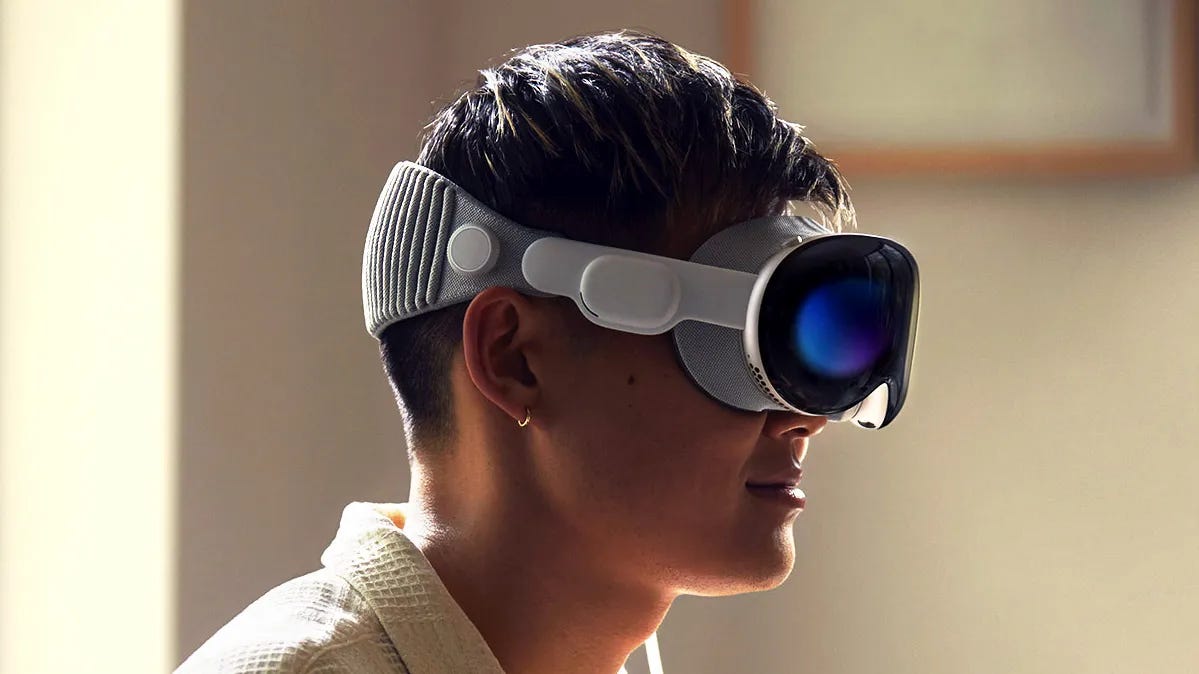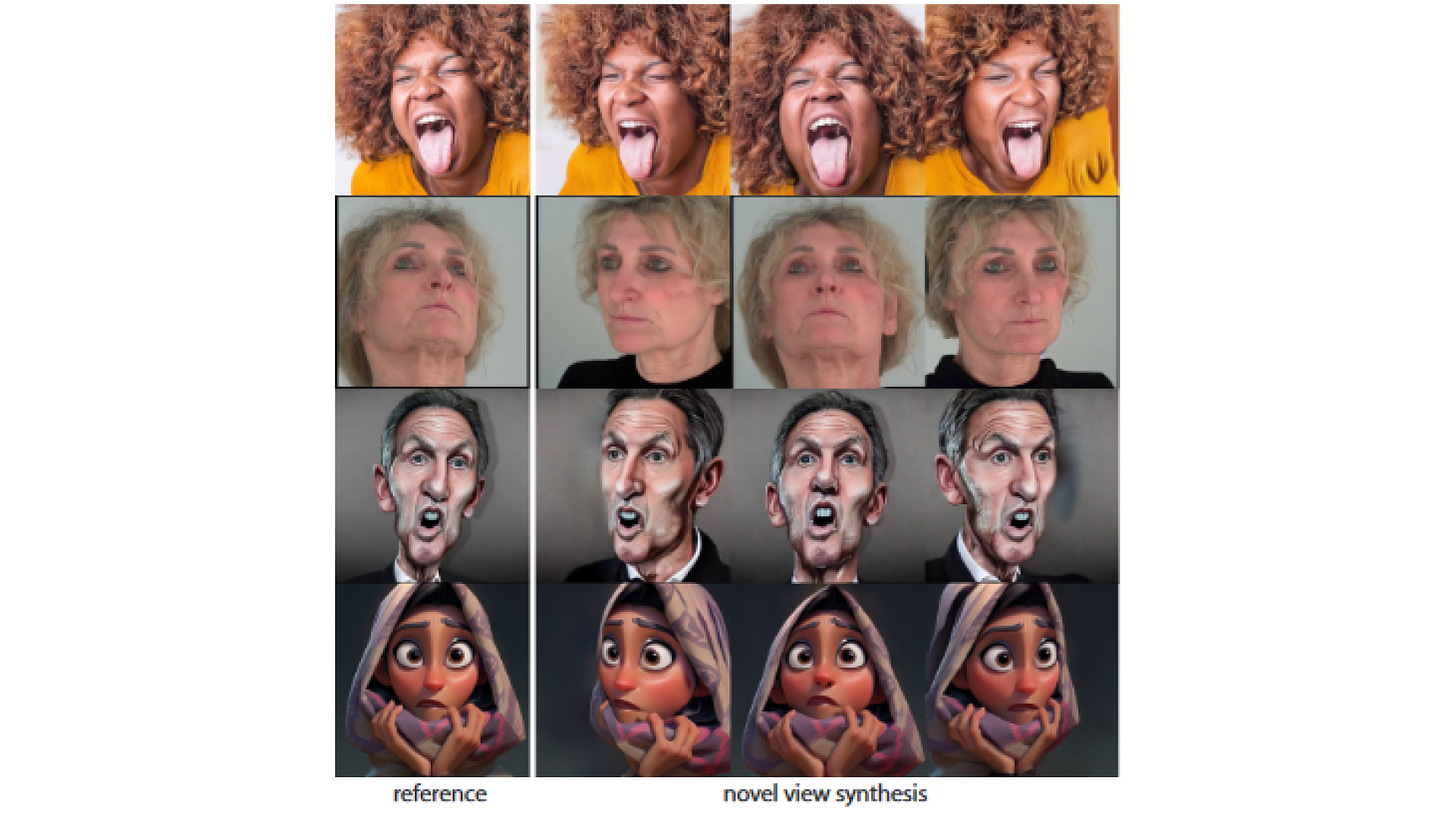NeuralByte's weekly AI rundown - 30th December
OpenAI’s Legal Battle, Apple's Vision Pro, Meta’s PlatoNeRF, and more!
Greetings fellow AI enthusiasts!
As we stand on the brink of a brand new year, I want to take a moment to extend my warmest wishes to you. May the coming year be filled with joy, success, and all the wonderful things life has to offer. Here's to new beginnings and exciting adventures!
Now, let's dive into the AI rundown to keep you in the loop on the latest happenings:
💼 OpenAI and Microsoft face lawsuit from The New York Times
🥽 Apple Vision Pro: What to expect from the $3,499 spatial computing device
🍏 Apple’s design chief enlisted by Jony Ive, Sam Altman to create AI devices
🤖 PlatoNeRF by Meta: A method for 3D reconstruction from single-view lidar data
🦠 Discovery of a new class of antibiotics using explainable AI
🙂 DiffPortrait3D: A method for synthesizing realistic 3D portraits from a single image
💵 OpenAI Seeks to Raise $100 Billion in New Funding Round
⚙️ Humane’s Ai Pin: A Wearable Computer Powered by AI
And more!
OpenAI and Microsoft face lawsuit from The New York Times over copyright infringement
The New York Times has filed a lawsuit against OpenAI and Microsoft, accusing them of using millions of its articles to train chatbots that compete with the newspaper. The suit seeks billions of dollars in damages and the destruction of any A.I. models and data that use The Times’s content.
The details:
The lawsuit is the first of its kind by a major American media organization against the creators of ChatGPT and other popular A.I. platforms.
The Times claims that the defendants have free-ridden on its investment in journalism and have used its articles to generate answers that substitute for and steal audiences away from the newspaper.
The suit also cites examples of A.I. “hallucinations” where chatbots insert false information that is wrongly attributed to The Times, damaging its reputation and credibility.
The Times says it approached Microsoft and OpenAI in April to raise concerns and explore a possible resolution, but the talks have not been fruitful.
The lawsuit could test the legal boundaries of generative A.I. technologies and have major implications for the news industry and other creative sectors.
Why it’s important:
The case highlights the tension between the rapid development of A.I. technologies and the protection of intellectual property rights. It also raises questions about the ethical and social implications of using A.I. to create and disseminate information. The outcome of the lawsuit could shape the future of A.I. and journalism.
Apple Vision Pro: What to expect from the $3,499 spatial computing device
Apple’s first foray into the realm of spatial computing is set to launch in early 2024. The Vision Pro, a $3,499 headset that combines virtual and augmented reality, is one of the most anticipated and ambitious products from the tech giant. Here’s what we know so far about the device and its potential impact.
The details:
The Vision Pro will offer a high-resolution display, advanced eye and hand tracking, spatial audio, and a sleek design that resembles a pair of sunglasses.
It will run on a custom chip and a new operating system called RealityOS, which will support a range of apps and games from developers and content creators.
The device will require a connection to an iPhone or a Mac to function, as it will rely on their processing power and data.
It will be initially available only in the US, and will require a special fitting and customization process at Apple Stores.
The device will be limited to around 500,000 units in its first year, as Apple faces production challenges and supply constraints.
Why it’s important:
The Vision Pro is a bold move by Apple to enter the emerging market of spatial computing, which could revolutionize how we interact with digital content and the physical world. The device could also pave the way for Apple’s future plans to create a more immersive and lightweight AR glasses, which are rumored to be in development. The Vision Pro could be a game-changer for the industry and the consumers, as it could set new standards for quality, performance, and user experience.
Apple’s design chief Jony Ive enlisted by Sam Altman to create AI devices
Former Apple design chief Jony Ive and OpenAI CEO Sam Altman are reportedly working on a new project to develop artificial intelligence hardware devices. The project aims to create products that offer a natural and intuitive way to interact with AI, similar to how the iPhone revolutionized mobile computing.
The details:
Ive and Altman have been discussing what new hardware for the age of AI could look like, and are seeking up to $1 billion in funding for the project.
Ive’s design firm LoveFrom will shape the look and capabilities of the new products, while Altman’s OpenAI will provide the software underpinnings.
The project is still at an early stage, and the details of the devices are unclear, but they could include devices for the home.
Ive and Altman have worked together in the past, and are both directors of US venture fund Churchill Capital.
Ive is famous for designing iconic products such as the iMac, iPhone and iPad, while Altman is one of the leading figures in the field of AI, and the creator of ChatGPT.
Why it’s important:
AI is one of the most powerful and disruptive technologies of our time, and it has the potential to transform various aspects of our lives, from entertainment to health care. However, AI also poses many challenges and risks, such as privacy, security, ethics and regulation. Creating devices that can harness the power of AI while ensuring a user-friendly and safe experience is a formidable task, and one that requires the collaboration of experts from different domains. Ive and Altman are two of the most influential and visionary people in the tech world, and their project could have a significant impact on the future of AI.
PlatoNeRF by Meta: A novel method for 3D reconstruction from single-view lidar data
The details:
PlatoNeRF leverages the advantages of both NeRF and two-bounce lidar, which can reveal the geometry of hidden objects by measuring the shadows they create.
Method is able to handle low spatial and temporal resolution, high ambient light, and low scene albedo, which are common challenges for RGB-based methods that exploit shadows.
PlatoNeRF outperforms existing methods for single-view 3D reconstruction with NeRF or lidar on both simulated and real-world datasets.
It is agnostic to the flavor of NeRF and can be integrated with other variants in the future.
Why it’s important:
PlatoNeRF is a promising direction for 3D reconstruction as single-photon lidars become more ubiquitous on consumer devices, such as phones, tablets, and headsets. The method enables accurate and robust 3D scene understanding from a single view, which is critical for many applications, such as autonomous vehicles, extended reality, and robotics.
Discovery of a new class of antibiotics using explainable AI
Researchers have used explainable artificial intelligence (AI) to identify a novel structural class of antibiotics that can kill drug-resistant bacteria. The study, published in Nature, demonstrates the power of AI to accelerate antibiotic discovery and provide insights into the chemical features that underlie antibacterial activity.
The details:
The researchers trained graph neural networks, a type of AI model, on experimental data from 39,312 compounds to predict their antibiotic activity and cytotoxicity.
They used explainable graph algorithms to identify chemical substructures, or rationales, that were associated with high predicted antibiotic activity and low predicted cytotoxicity.
They tested 283 compounds that contained these rationales and found that 17 of them had antibacterial activity against Staphylococcus aureus, a common cause of infections in humans.
One of these compounds, named compound 1, was found to be selective against methicillin-resistant S. aureus (MRSA) and vancomycin-resistant enterococci, two of the most dangerous drug-resistant pathogens.
Compound 1 also showed low resistance development, low toxicity, and efficacy in mouse models of MRSA skin and systemic thigh infection.
Why it’s important:
Antibiotic resistance is a global health threat that requires urgent action. The discovery of new classes of antibiotics is essential to combat the emergence and spread of resistant bacteria. However, conventional methods of antibiotic discovery are slow and costly. AI can help to overcome these challenges by efficiently exploring large chemical spaces and generating novel hypotheses. The explainable AI approach used in this study not only identified promising antibiotic candidates, but also revealed the chemical substructures that contribute to their activity. This could facilitate the design of more potent and selective antibiotics in the future.
DiffPortrait3D: A novel method for synthesizing realistic 3D portraits from a single image
Researchers from ByteDance and USC have proposed DiffPortrait3D, a conditional diffusion model that can generate 3D-consistent and photo-realistic novel views of a portrait from as few as a single input image. The method leverages the generative power of pre-trained 2D diffusion models, while controlling the appearance and camera pose with disentangled attentive modules. The method can handle challenging in-the-wild portraits with diverse expressions, styles, and views, without any fine-tuning.
The details:
DiffPortrait3D injects the appearance context from the reference image into the self-attention layers of a frozen 2D diffusion model, preserving the identity and expression of the input.
Method manipulates the rendering view with a novel conditional control module that interprets the camera pose by watching a condition image of a different subject from the same view, avoiding appearance leakage from the condition image.
It enhances view consistency with a cross-view attention module and a 3D-aware noise generation process, reducing flickering artifacts when animating the views.
DiffPortrait3D outperforms state-of-the-art methods both qualitatively and quantitatively on synthetic and real-image benchmarks, demonstrating superior generalization capability and perceptual quality.
Why it’s important:
DiffPortrait3D is a novel zero-shot approach that extends 2D diffusion models for synthesizing 3D consistent novel views from a single portrait. This opens up possibilities for accessible 3D reconstruction and visualization from a single picture, with applications in visual effects, digital avatars, 3D animation, and more. The method also showcases the effectiveness of explicitly disentangled control of appearance and view, without harming the generative prior of large pre-trained diffusion models.
OpenAI Seeks to Raise $100 Billion in New Funding Round
OpenAI, the company behind the chatbot ChatGPT, is in early talks to raise a new round of funding at a valuation of at least $100 billion, according to sources. This would make the artificial intelligence startup one of the most valuable in the world, second only to SpaceX. OpenAI has sparked a wave of interest in AI since releasing ChatGPT, a chatbot that can generate realistic sentences and even poetry. The company has raised $13 billion to date from investors such as Microsoft Corp. and aims to leverage nuclear fusion, the ‘holy grail’ of energy, to power a sustainable future.
Humane’s Ai Pin: A Wearable Computer Powered by AI
Humane, a startup backed by Sam Altman, has announced that its Ai Pin will start shipping in March 2024. The Ai Pin is a wearable device that employs AI technology to provide a unique user experience. Users can communicate with an AI chatbot through voice and laser ink technology, unlike conventional consumer tech products. The Ai Pin also offers cellular connectivity, a dedicated number, and data coverage through a Humane subscription. The device costs $699 and weighs about 34 grams. The Ai Pin is expected to be a game-changer in the field of wearable computing.
Quick news
Apple’s latest AI research could completely transform your iPhone (link)
Anthropic forecasts more than $850 mln in annualized revenue rate by 2024 (link)
Samsung's Galaxy S24 leaked before the next Unpacked event has even been confirmed (link)
Be better with AI
In this section, we will provide you with comprehensive tutorials, practical tips, ingenious tricks, and insightful strategies for effectively employing a diverse range of AI tools.
How to create your own song with Microsoft Copilot and Suno
Step 1: Enable Suno
Go to Microsoft Copilot and sign in with your account
Navigate to the plugins tab, make sure ‘Search’ is enabled, then activate Suno
Step 2: Start prompting
Don’t overthink it, simple prompts work very well
Write a prompt in the Copilot editor, such as "Make a groovy rap jazz song about AI advancing society"
Press the ‘Run’ button to send the prompt to Suno
Step 3: Get your song
After about a minute, Copilot will give you an external link to listen to the song
You can also download the song as an MP3 file or share it with others
Enjoy your AI-generated music track! 🎵
Tools
📑 Genie - Analyze, summarize, and visualize data without SQL requirements. (link)
🔗 Monica - Multifunctional AI communication assistant (link)
⚒️ Graft - Automate routine tasks, productivity, and generate quality outcomes. (link)
🧑🦰 Guidde - Helps your team create video documentation 11x faster (link)
📱 Dr. Change - Assist you towards building new habits (link)
🦹 Superhuman - The Fastest Email Experience Ever Made (link)
We hope you enjoy this newsletter!
Please feel free to share it with your friends and colleagues.
Happy New Year, friends!
We want to express our deepest gratitude for being part of our community. Your support means the world to us, and we can't wait to bring you more exciting AI updates in the upcoming year. May 2023 be a year of growth, learning, and incredible discoveries for you. Happy New Year, and thank you for subscribing!









